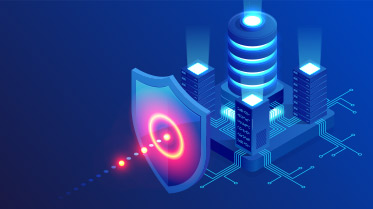Digital transformation is now a top priority for every CXO: whether it is to enhance operational efficiency, improve employee productivity, or boost business agility – most organizations are kick-starting or strengthening their digital transformation initiatives in order to drive better results. Although most efforts are focused on modernizing legacy systems or embracing innovative technologies like AI and automation, not many are really driving their energies towards updating their cybersecurity strategies. Given the speed at which data is ballooning and new workplace models are emerging, cyberattacks are becoming increasingly frequent – especially as organizations navigate the constant dearth of skilled resources.
Cybersecurity in the Age of Digital Transformation: Pivoting in 2022
As companies embrace technologies such as IoT, big data, and cloud, security needs to be more than just an afterthought. Although most organizations have secured their perimeters, in today’s age where data volumes are swelling and devices accessing enterprise networks are proliferating, building cybersecurity strategies that spread across systems, devices, and the cloud is important. Let’s look at some factors that have made cybersecurity in the age of digital transformation extremely challenging:
Data is Everything
In today’s digital age, data has become the new fuel, driving organizations to the pinnacle of success. As more and more data is being generated by systems, processes, devices, people, and interactions, there is a growing need to protect and safeguard this data 24×7 – especially in the light of evolving data regulations such as the GDPR. Protecting these growing volumes of digital information against unauthorized access, use, and corruption will go a long way in ensuring the long-term well-being of every business.
Attacks are More Sophisticated Than Ever
Although innovations in technology are empowering businesses to drive greater efficiencies in their day-to-day business, these advancements are equally being exploited by bad actors. To deal with sophisticated phishing, social engineering, compromised devices, SQL injection, credential theft, and a range of DoS and DDoS attacks, organizations have to carry out detailed security program diagnostics, enable unified endpoint security measures, opt for Managed Detection and Response Services as well as invest in modern risk management frameworks to enhance their defensive posture.
There is a Constant Dearth of Cybersecurity Resources
In the world of technology, the skills gap is constantly widening. Despite the growing need for qualified cybersecurity professionals, most organizations are facing a constant dearth – which puts their business at increased risk. To deal with this challenge, organizations can either look at upskilling or reskilling their existing resources, embrace automated security monitoring solutions, or better still partner with experts who can provide specialized Managed Security Services. Having a partner in tow can aid in providing a comprehensive suite of services across devices, networks, and applications, while also help in keeping pace with the rapidly evolving threat landscape and dealing with threats in a proactive manner.
The Growth of Multi-Cloud Environments
For organizations that leverage multiple cloud computing and storage services in a single heterogeneous architecture, securing distributed assets across different cloud-hosting environments is particularly challenging. To overcome this challenge, it is critical organizations implement a wide range of security settings and policies across all clouds and maintain them in the same way to ensure consistency. Automating common security tasks, minimizing the use of point security solutions, and embracing centralized security frameworks can further aid in improving cloud-wide visibility while empowering decision-makers to make critical and timely decisions via actionable insights.
The Widespread Shift to the Hybrid Work Model
The widespread and continuous shift to the hybrid work model has also put organizations at greater risk of attacks. Because more devices are now accessing enterprise networks – a lot of them also personal – the attack surface has increased tremendously. To mitigate the risks of unsecured home networks, stolen or lost devices, targeted phishing attacks, and lapsed antivirus updates, organizations must have strong security controls in place. They must invest in data encryption mechanisms as well as update their authentication procedures to ensure only authorized personnel have access to enterprise resources. Since the hybrid work model presents the ideal breeding ground for shadow IT, organizations also need to invest in secure cloud solutions, implement multiple layers of security, and constantly engage in security trainings for users.
Fortifying Your Cybersecurity Strategy
The effort and money being spent towards digital transformation are at an all-time high. In 2022, spending on digital transformation is projected to reach $1.8 trillion and is expected to reach $2.8 trillion by 2025. But just embracing modern technology is not going to take organizations far; they need to be extremely wary of the cybersecurity risks that come along. Driving cybersecurity in the age of digital transformation requires focused and continuous efforts towards building security into applications and processes right from the beginning, updating authentication and authorization strategies, and opting for Managed Security Services for long-term growth and success.





